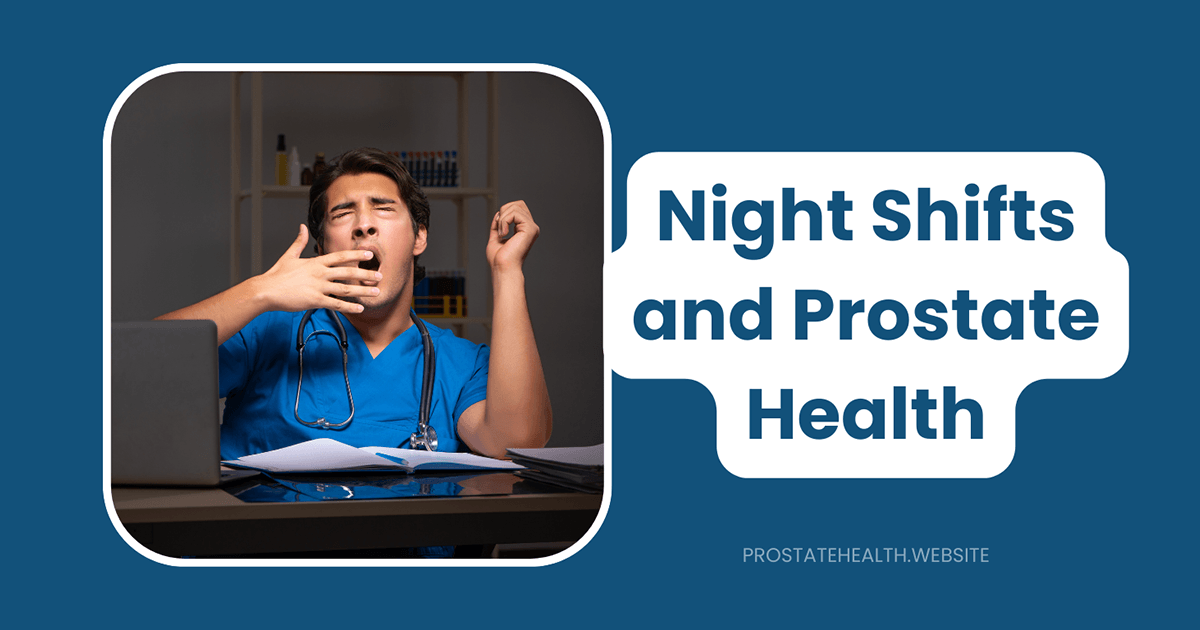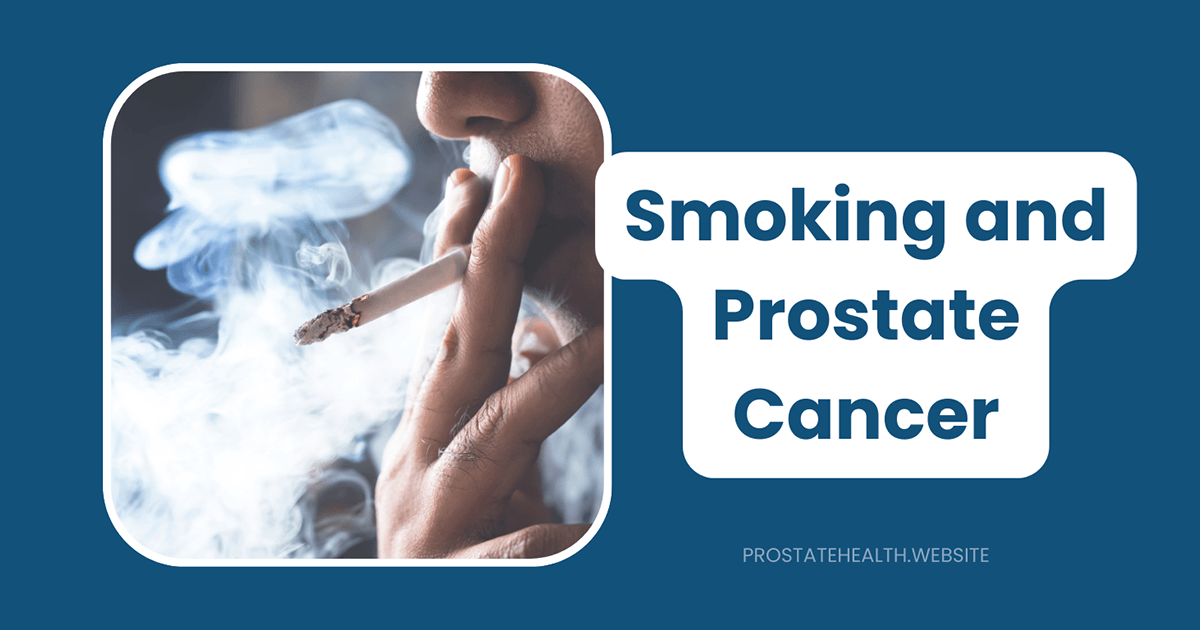The Impact of Shift Work on Prostate Health

When James, a 52-year-old police officer, began experiencing urinary problems after 20 years of rotating night shifts, his doctor asked an unexpected question: “How long have you been working nights?”
“I was surprised,” James told me. “I never connected my work schedule to my prostate health. But my urologist explained that years of disrupted sleep patterns might be contributing to my symptoms.”
James is one of approximately 25 million Americans—nearly 20% of the workforce—who work non-standard hours. From healthcare professionals and emergency responders to factory workers and transportation personnel, shift workers keep our 24/7 society functioning. But this around-the-clock schedule may come with hidden health costs, particularly for men’s prostate health.
This comprehensive guide explores the complex relationship between shift work and prostate health, examining the scientific evidence, potential mechanisms, and practical strategies to mitigate risks.
Understanding Shift Work and Circadian Rhythms
Before diving into prostate-specific effects, it’s important to understand how shift work impacts our body’s natural rhythms.
Types of Shift Work
Shift work encompasses various non-standard schedules:
- Fixed night shifts: Consistently working overnight hours
- Rotating shifts: Alternating between day, evening, and night shifts
- Early morning shifts: Starting before 6 AM
- Extended shifts: Working more than 8-10 hours at a stretch
- Irregular schedules: Unpredictable work hours that change frequently
The Body’s Internal Clock
Humans have evolved with a circadian rhythm—an internal clock that regulates numerous physiological processes over a roughly 24-hour cycle. This system:
- Controls hormone production, including melatonin and testosterone
- Regulates sleep-wake cycles
- Influences body temperature, metabolism, and immune function
- Affects cell growth and DNA repair mechanisms
Dr. Sarah Johnson, sleep medicine specialist at Memorial Sleep Center, explains: “Our bodies are designed to be active during daylight and rest during darkness. When shift work forces the opposite pattern, it creates a misalignment between our internal biological clock and the external environment. This misalignment can trigger a cascade of physiological disruptions.”
Circadian Disruption and Health
Shift work, particularly night shifts, can disrupt circadian rhythms through:
- Light exposure at night: Suppresses melatonin production
- Sleep deprivation: Reduces total sleep time and quality
- Meal timing changes: Affects metabolic processes
- Social desynchronization: Creates stress from being out of sync with family and society
These disruptions have been linked to numerous health issues, including cardiovascular disease, metabolic disorders, mental health problems, and certain cancers—including prostate cancer.
Shift Work and Prostate Cancer Risk
The relationship between shift work and prostate cancer has been the subject of increasing scientific investigation.
The Research Evidence
Several key studies have examined this relationship:
- A meta-analysis published in Nature found that rotating night-shift work was associated with a 6% increased risk of prostate cancer (RR = 1.06, 95% CI of 1.01 to 1.12), while fixed night shifts showed no significant association.
- A 2023 study in the journal Heliyon estimated that prostate cancer risk increased by 1%, 12%, 24%, and 39% after 1, 10, 20, and 30 years of night shift work exposure, respectively, suggesting a dose-response relationship.
- The EPICAP Study found that men with at least 20 years of permanent night work had a 76% increased risk of aggressive prostate cancer (OR=1.76, 95% CI 1.13 to 2.75), with risk particularly elevated for those working long shifts (>10 hours) with at least six consecutive nights.
- In 2018, the National Toxicology Program concluded that persistent night shift work “may cause prostate cancer in men,” though the evidence was not as strong as for breast cancer in women.
Factors That Modify Risk
Research suggests that certain factors may influence the relationship between shift work and prostate cancer:
1. Shift Schedule Type
Rotating shifts appear to carry higher risk than fixed night shifts. A meta-analysis found the summary relative risk for rotating night shifts was 20% higher compared to fixed schedules.
2. Duration of Exposure
Longer exposure to night shift work is associated with greater risk. Men with 20+ years of night work experience show significantly higher risk than those with shorter durations.
3. Shift Intensity
Working long shifts (>10 hours) and multiple consecutive nights increases risk. One study found a 4.64-fold increased risk of prostate cancer for men working shifts longer than 10 hours with at least six consecutive nights.
4. Chronotype
Individual differences in circadian preference (whether someone is naturally a “morning person” or “night owl”) may modify risk. The EPICAP Study found increased prostate cancer risk among evening chronotype men who worked night shifts.
Potential Biological Mechanisms
Several mechanisms may explain the link between shift work and prostate cancer:
1. Melatonin Suppression
Melatonin, a hormone produced primarily during darkness, has anti-cancer properties including:
- Antioxidant effects
- Inhibition of cancer cell growth
- Enhancement of immune function
- Regulation of other hormones, including testosterone
Light exposure during night shifts suppresses melatonin production. A study in the American Journal of Epidemiology found that men with lower urinary melatonin levels had a fourfold increased risk for advanced prostate cancer.
2. Hormonal Disruption
Shift work can alter testosterone production, which follows a circadian pattern (higher during sleep, lower during wakefulness). Disrupted testosterone rhythms may influence prostate cancer development and progression.
3. Immune System Effects
Circadian disruption can impair immune function, potentially reducing surveillance against cancer cells. Studies show shift workers have altered levels of natural killer cells and inflammatory markers.
4. Chronic Inflammation
Night shift work is associated with increased levels of inflammatory markers, which may create an environment conducive to cancer development.
Dr. Michael Chen, oncologist specializing in prostate cancer, notes: “While the evidence linking shift work to prostate cancer isn’t as strong as for some other risk factors, the biological plausibility is compelling. The disruption of multiple interconnected systems—hormonal, immune, inflammatory—creates conditions that could promote cancer development or progression.”
Shift Work, BPH, and Urinary Symptoms
Beyond cancer risk, shift work may also impact benign prostatic hyperplasia (BPH) and associated lower urinary tract symptoms (LUTS).
Research Findings
- A study published in Urology found that shift workers with Shift Work Sleep Disorder (SWSD) had significantly worse LUTS than those without sleep disorders, with International Prostate Symptom Score (IPSS) scores 3.74 points higher.
- Research presented at the American Urological Association found that poor sleep quality, rather than shift work itself, was the primary contributor to worse urinary symptoms.
- A 2023 review in the Journal of Urology noted that “Circadian Syndrome” (including sleep disturbances) was associated with a 3.62% higher risk of BPH/LUTS compared to metabolic syndrome alone.
Mechanisms Linking Shift Work to BPH/LUTS
Several pathways may connect shift work to urinary symptoms:
1. Disrupted Hormone Production
Circadian disruption affects:
- Testosterone levels, which influence prostate growth
- Antidiuretic hormone (ADH), which regulates urine production
- Cortisol rhythms, which can affect inflammation
2. Altered Fluid Regulation
Normal circadian rhythms reduce urine production at night. Disrupted rhythms can lead to:
- Increased nighttime urine production
- Nocturia (waking to urinate)
- Disrupted sleep, creating a vicious cycle
3. Chronic Inflammation
Shift work is associated with increased inflammatory markers, which may contribute to prostate inflammation and BPH progression.
4. Metabolic Effects
Shift workers have higher rates of metabolic syndrome, which is independently associated with increased BPH risk and severity.
James, the police officer mentioned earlier, found that his LUTS improved when he was temporarily assigned to day shifts. “The difference was noticeable within a few weeks,” he reports. “I wasn’t getting up as often at night, and the urgency and frequency during the day decreased. It was eye-opening to realize how much my work schedule was affecting my prostate.”
Practical Strategies for Shift Workers
While changing work schedules isn’t always possible, shift workers can take steps to mitigate the potential negative effects on prostate health.
1. Optimize Sleep Environment and Habits
- Create a dark sleeping environment: Use blackout curtains, eye masks, and eliminate light sources
- Maintain consistent sleep schedule: Go to bed and wake up at the same times, even on days off
- Limit screen exposure: Avoid blue light from phones and computers before sleep
- Create a relaxing pre-sleep routine: Try reading, gentle stretching, or meditation
2. Strategic Light Exposure
- Maximize bright light exposure during work hours: This helps maintain alertness and adjust circadian rhythms
- Wear blue-light blocking glasses: When commuting home after night shifts to minimize melatonin suppression
- Consider light therapy: Bright light boxes can help reset circadian rhythms
3. Nutritional Approaches
- Time meals appropriately: Try to eat on a regular schedule despite shifting work hours
- Choose prostate-healthy foods: Include tomatoes, cruciferous vegetables, and fatty fish
- Limit caffeine: Especially in the hours before planned sleep
- Stay hydrated: But reduce fluid intake before sleep periods
4. Supplement Considerations
- Melatonin: May help regulate sleep and has potential prostate benefits (consult healthcare provider for appropriate timing and dosage)
- Vitamin D: Shift workers often have deficiencies due to limited sun exposure
- Antioxidants: May help counter oxidative stress from circadian disruption
5. Physical Activity
- Regular exercise: Aim for 150 minutes of moderate activity weekly
- Time workouts appropriately: Exercise can help reset circadian rhythms when timed correctly
- Include both aerobic and resistance training: Both have benefits for prostate health
6. Prostate-Specific Strategies
- Regular prostate screening: Discuss appropriate screening schedule with your healthcare provider
- Monitor urinary symptoms: Track any changes in urinary patterns or function
- Consider pelvic floor exercises: May help manage urinary symptoms
- Maintain healthy weight: Obesity is a risk factor for both prostate cancer and BPH
7. Schedule Optimization (When Possible)
- Limit number of consecutive night shifts: Three or fewer is recommended
- Rotate shifts clockwise: Forward rotation (day → evening → night) is easier for the body to adjust to than backward rotation
- Allow adequate recovery time: Ensure at least 11 hours between shifts
- Advocate for predictable schedules: Regular patterns are easier for the body to adapt to than irregular changes
Dr. Robert Thompson, occupational health specialist, advises: “While shift work is necessary in many industries, how it’s structured makes a significant difference to health impacts. Workers and employers should collaborate to implement schedules that minimize circadian disruption while meeting operational needs.”
Special Considerations for Different Shift Patterns
Different shift patterns present unique challenges and require tailored approaches:
For Rotating Shift Workers
Rotating shifts appear to carry the highest prostate cancer risk, possibly because they prevent the body from ever fully adapting. If you work rotating shifts:
- Request forward rotation patterns (day → evening → night)
- Allow at least 24 hours between shift changes
- Use bright light therapy strategically during the first hours of each shift
- Be especially vigilant about sleep hygiene during transitions
For Permanent Night Shift Workers
Fixed night shifts allow the body to partially adapt if a consistent schedule is maintained:
- Keep the same sleep schedule on days off
- Use blackout curtains and white noise machines to improve daytime sleep
- Consider discussing melatonin supplementation with your healthcare provider
- Maximize exposure to bright light during work hours
- Minimize light exposure during commute home (wear sunglasses)
For Early Morning Shift Workers
Early shifts (starting before 6 AM) can also disrupt circadian rhythms:
- Go to bed early enough to get 7-8 hours of sleep
- Use light therapy upon waking to help reset your body clock
- Avoid caffeine in the afternoon and evening
- Consider a brief afternoon nap if possible
When to Seek Medical Advice
Shift workers should be particularly attentive to prostate health and seek medical advice if experiencing:
- Difficulty starting or stopping urination
- Weak urine stream or dribbling
- Frequent urination, especially at night
- Pain or burning during urination
- Blood in urine or semen
- Persistent pain in the lower back, hips, or pelvic area
- Erectile dysfunction or changes in sexual function
Additionally, discuss with your healthcare provider:
- Appropriate prostate cancer screening schedule based on your risk factors
- Symptoms of shift work sleep disorder
- Strategies to manage circadian disruption
- Supplements that might be beneficial for your situation
The Future of Shift Work and Health
As research continues to clarify the relationship between shift work and prostate health, several developments may help reduce risks:
- Chronotype-based scheduling: Assigning shifts based on individual circadian preferences
- Circadian-friendly lighting: Specialized lighting systems that adjust color temperature throughout shifts
- Wearable technology: Devices that monitor and help optimize circadian rhythms
- Pharmacological interventions: Medications that help regulate circadian systems
- Policy changes: Workplace regulations that limit the most disruptive shift patterns
Conclusion: Balancing Work Requirements and Health
For millions of men, shift work is an unavoidable reality of their profession. The evidence suggests that these non-standard schedules, particularly rotating night shifts over long durations, may increase risks to prostate health.
However, knowledge is power. By understanding these risks and implementing targeted strategies to minimize circadian disruption, shift workers can take proactive steps to protect their prostate health.
James, our police officer from the introduction, worked with his department to modify his schedule to fewer consecutive night shifts with longer recovery periods. He also implemented many of the strategies discussed in this article. “I can’t avoid night shifts completely in my profession,” he says, “but making these changes has significantly improved my symptoms and overall wellbeing. I wish I’d known about the connection between shift work and prostate health years ago.”
If you’re a shift worker, remember that while you can’t always change your work schedule, you can optimize your habits around it. Work with your healthcare providers to develop a proactive approach to monitoring and maintaining your prostate health.
Are you a shift worker concerned about prostate health? What strategies have you found helpful? Share your experiences in the comments below.






